Erik Buell’s name is firmly etched in motorcycle history as the visionary founder of the eponymous Buell Motorcycle Company. Buell has long been celebrated as an innovator who challenged industry norms and basically invented the American sportbike, using Harley-Davidson motors in chassis of his own design. The technological trinity guiding his radical chassis designs include perfect mass centralization, frame rigidity, and minimized unsprung weight. His groundbreaking designs include the fuel-in-frame chassis, a rim-mounted front disc brake, and the underslung exhaust systems on his motorcycles. From the founding of Buell Motorcycles in 1983 until Harley-Davidson pulled the plug in 2009, over 137,000 Buell motorcycles were manufactured. After that, Erick Buell switched to designing electric bicycles and motorcycles with Fuell [see our previoius interview here]. Buell motorcycles are still being produced, but Erik is no longer affiliated with the company bearing his name.

John Lawless (JL) Erik, we had to push back our chat tonight because you had a practice session with your band. Is this your touring band for the new album?
Erik Buell (Erik) No, I’m playing bass with friends who cover everything from the 1960s to current stuff. I love playing bass just for grins and we’ve got a very good drummer who won’t let you drift off; he’s like using a metronome. It keeps your chops up.
JL I have to say I’m really enjoying your new album Ride Free as well as last year’s Dust Settles. It’s much more accessible than your first album. I hope you don’t mind me saying, but that first album reminded me of your motorcycles, a full-frontal assault of rock-n-roll and horsepower. This one seems to be a more contemplative and personal album with incredible musicianship.
Erik Yeah, that was my metal album Anthem with the Thunderbolts in 2010. We did a lot of shows and then during COVID it really hit me that I was feeling isolated and I missed people. I love engineering but I was kind of fried on it, and you know, one of the best things about Buell (motorcycles) was the people, the motorcyclists I’d met. I wanted to communicate with people again, and I can be creative, so thought maybe I’d writing a little bit of music. All of a sudden my buddy Ralph said “shoot, your writing is pretty good” and off we went.
JL There’s nothing like the immediate feedback you get performing in front of a live audience.
Erik Yeah, I mean I think that’s true and you know it something that’s funny. I’ll tell you a story because you like Ride Free. I was thinking, who are the listeners? Ride Free came from thinking about, you know, being young and wild and when I met my wife, we’ve been together 25 years now. We were together in college and she left me over racing. At that time my heart was broken, but on the other hand I couldn’t leave racing. I wasn’t sure if a lot of people would understand what ‘high side’ means, so I wrote words that related to horses instead, thinking it captured what it meant to be young and wild. You’re going to have to grow up someday but not too soon.
JL I was impressed that you were still able to tap back into that emotion and put that to music. It’s fresh and interesting and it adds another dimension to people’s image of Erik Buell.
Erik I’m just going to say that I do love music and making people happy. This makes me happy, too. I’m still here so the music’s a little bit of the same thing, that if you can reach a few people and I keep myself from being sad and bored, it works.
JL So you recorded Dust Settles in California, how’d you end up in Nashville for the latest album Ride Free?
Erik Another friend of mine, Dave Northrup (studio and touring drummer), called and said they had a cancellation for a day and a half and we went in and did it. Somehow, we recorded the whole album in one day with the most incredible top level musicians in Nashville. Their playing is another world. I didn’t play anything on this one so I could focus on the singing. We’ve been getting airplay on Americana radio for a few months now.
JL So I’ve heard the title song for Ride Free and saw in the video that it references your time racing a Ducati 900SS and Yamaha TZ750. You were doing music in high school and college before you got into motorcycles when you live in Pennsylvania.
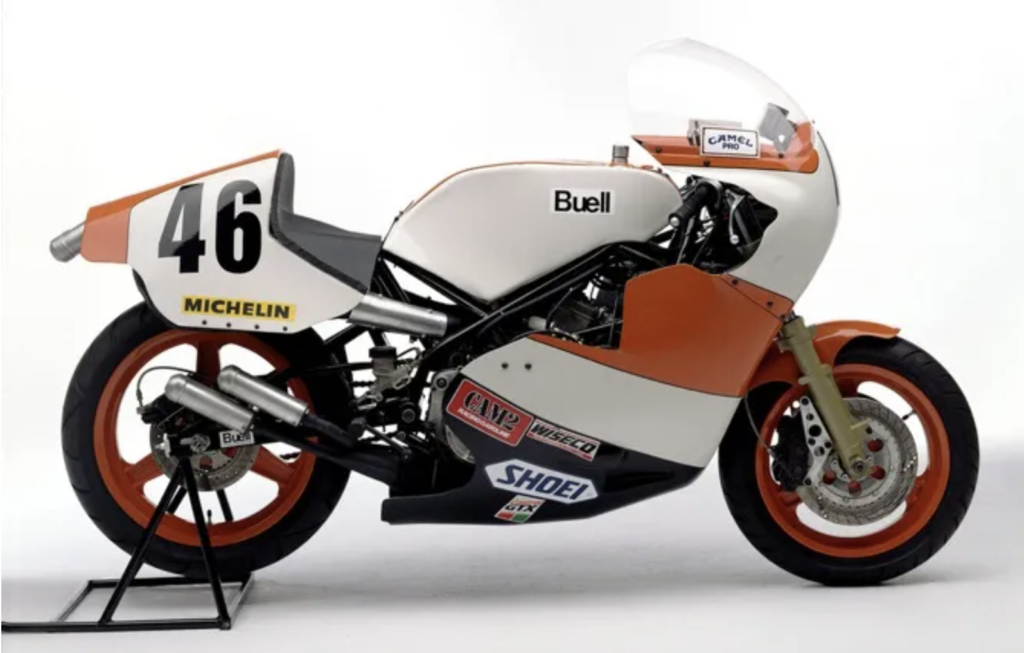
JL I think your instincts proved right about that.
Erik I’d have to say that’s true! I went back to night school and took a whole lot of courses in the last year before I went to work for Harley-Davidson. It was the lowest paying job offer I got but I went to work on July 1, 1979.
JL So you were there in the AMF (American Machine and Foundry owned Harley-Davidson from 1969-1981) days. You left Pittsburgh and went to Wisconsin to find fame and fortune with Harley.
Erik I just wanted to use my engineering skills and see how it all worked. There were a whole lot of cool people there and Harley was in deep financial trouble so it felt like it really mattered. They had a lot of issues with the old AMF motors. They were horrible and the first job I had in the office was to sort out why. My everyday street bike was a Suzuki GT750, the “water buffalo”, which I just loved. It was so smooth, and fast enough you could really humiliate some amateurs on the backroads. It was a two-stroke with an oil injection system. My GT750 got like 1200 miles to a quart: Harleys were getting just 300 miles to the quart!
After that I started doing dynamic vehicle testing with this old style motorhome with a strip recorder. We’d start recording and we had 14 channel telemetry that would send signals back. The front end was weaving and wobbling its way down the straight. They were really horrible. I started to add more instrumentation and measuring things for the FXR and XR. I wound up putting LVDT’s (Linear Displacement Transducers) that would measure motion so I them on both sides of the fork tubes and then I had them on both of the shock absorbers. Next, I rigged a plate to the swingarm to measure the lateral deflection of the swingarm. As well as measuring steering angle we had strain transducers on the handlebars to see if you were actually fighting it. We started going to the test tracks and I’d have guys – the mechanics and tech union guys that could weld – cobble things together, like making the swingarm stiffer this way or that. We wound up making the FXR the best handling Harley by far. I mean it was really rewarding because it had been the worst. I’d ridden a lot of stuff like the Ducati and TZ750’s and I knew from a rider’s perspective what I liked and didn’t. I was instrumenting Harleys even though they were much slower and bigger because the same things mattered on both.

JL That’s funny, Alan Cathcart recently sent me some photos of him on a Buell RR1000 being pulled over by the Maryland State Police which was staged for the first test ride article of the bike. I imagine you’d had your share of run-ins with the law when you were on your own.

JL I didn’t know you were involved with the V-Road?
Erik Yeah, it’s a long story, I was involved with the original V-Rod and VR1000 racer but was aced out of them. I actually gave it the name VR early in the design phase, and laid out the engine; a ghost outline of the engine using information from the Cosworth BDG cylinder heads. That basic engine design was a pure outside sketch, I’m not claiming that I built it, or anything, but the outside…came from me, and that was the first chassis. I needed an outside shape of an engine concept to integrate into a chassis! And I was talking to the guys at Cosworth because they were building really high performance motors.
JL Was there more to it?
Erik, Okay, I’ll tell you about the hardship. So I had been working at Harley, and left to start building by Buell motorcycles. A little way into that they asked me to consult, because they were thinking about building a road racer and head seen me built the RR1000. They wanted to go AMA Superbike racing, this was probably in 1986. Yeah, we went into a meeting and they said they were thinking of taking the XR750 engine and pushing it out to 1,000cc and put a 5-speed in it, because the XR it had a 4-speed gearbox, and they wanted my help on updating the chassis. I said we’d been looking at the rules and you only have to make 50 examples to keep it production legal for the racing class. I added that it could be water-cooled. I did the math and told them a 1,000cc twin will beat a 750 four-cylinder, and so off I went and called the guys from Cosworth here in the US because they had a 300hp 3liter engine. I projected a bit less than 150 horsepower because of the V-twin, and ended up with 140, and that should be enough to win and of course, a V-twin is more driveable. To increase the horsepower further, The Cosworth guys said that to get the horsepower you need an airbox 12 times the size of the cylinder displacement, because each step you take out of the airbox, if it isn’t gigantic in volume, you’re pulling a vacuum – otherwise it’s the opposite of a supercharger. if the airbox isn’t gigantic in volume each time the cylinder takes a gulp, you’re pulling a vacuum so otherwise it’s like having the opposite
of a supercharger. So 12 times the volume required a 6 liter box, so that’s the size of a gas tank! Because of that I put the gas in the frame for the first VR prototype I built for them in 1988.
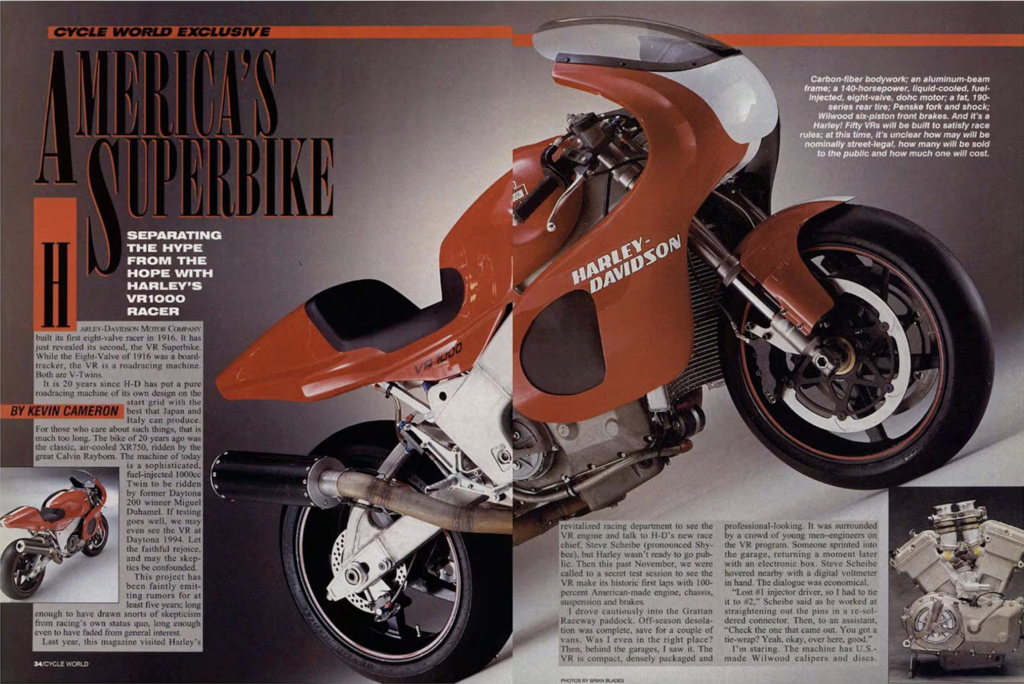
Erik I used to race a Ducati 900SS which was lovely but the Yamaha TZ750 I raced was very different. The TZ750 actually was the better handling bike because the problem with the 900Ss was that you sat too far back. I’d have to climb on top of the long tank and muscle it around. So I built it compact to have the rider up forward and a steep steering angle. I also split the radiators to get the front wheel as close as possible, considering full braking and fork deflection. So that was the idea of the original VR, and Harley started work redesigning the engine within those parameters. They hired a guy from Rausch and he felt this didn’t make sense, so development took longer than expected. I got a phone call from the AMA in December saying ‘one of your executives says you’ll be ready for Daytona in the Spring’, and they didn’t even have a running engine yet, so I said “hell no”. H-D’s V.P of Engineering, Mark Tuttle, called me up and said “You’ll never speak on behalf of Harley-Davidson again you son of a bitch, you’ve embarrassed me because I told them we’d be there.” I told him they weren’t going to be ready on time and he told me I was not allowed to speak on their behalf, then they threw me out. They brought in a guy from England to design a beam type frame, and then threw out this squirrelly tube frame that this guy from Michigan had built. The beam frame was pretty good one and the engine made good power on the dyno, but not in the bike, because the airbox wasn’t big enough. It would work on some tracks but the chassis was too long and the guys really had to fight the handling as a result.
JL I ran a 600 and 750 Supersports team back in 1995 and 1996 and got a chance to see nearly every track in the country and watch the VR struggle throughout the season. It blew me away by how big and bulbous the VR looked fully clothed and how absolutely tiny it was once the bodywork was off. The handling seemed fine but the reliability wasn’t there. It was disheartening to watch, knowing that it was not ever going to match the Japanese Superbike competition.
Erik It was a shame because they spent massive amounts of money but they were spending it wrong. They weren’t very organized. I got thrown out of the project but I was busy building Buells by this point. I suggested they let me run it as a Buell project but that didn’t happen. Well, on to the H-D purchase of Buell later. In 1993, Vaughn Beales (CEO and chairman of H-D at the time) called me and said, “You remember when you had your exit interview when you left Harley, and you told me you thought the cruiser business wouldn’t last? He told me he had gone out and talked to customers, not staff, not dealers but people who were more emotional about the bikes. “I saw this huge number of potential customers just gathered around this customer bike this dealer had built and they loved it”. It was like a 1930s classic style. He said, “I’m buying Buell for two reasons: one is that the economy will go up and down and the age of the biker will, too. If I chase volume and price I’m going to destroy this Rolex brand of ours. I need you to build us a sportbike for the guys who never are going to be as wealthy as the old guys who were celebrating their own youths and would spend big money on a Harley. I want to get them while they’re young and that’s what your brand is for me.” Well, you can’t fault that logic.
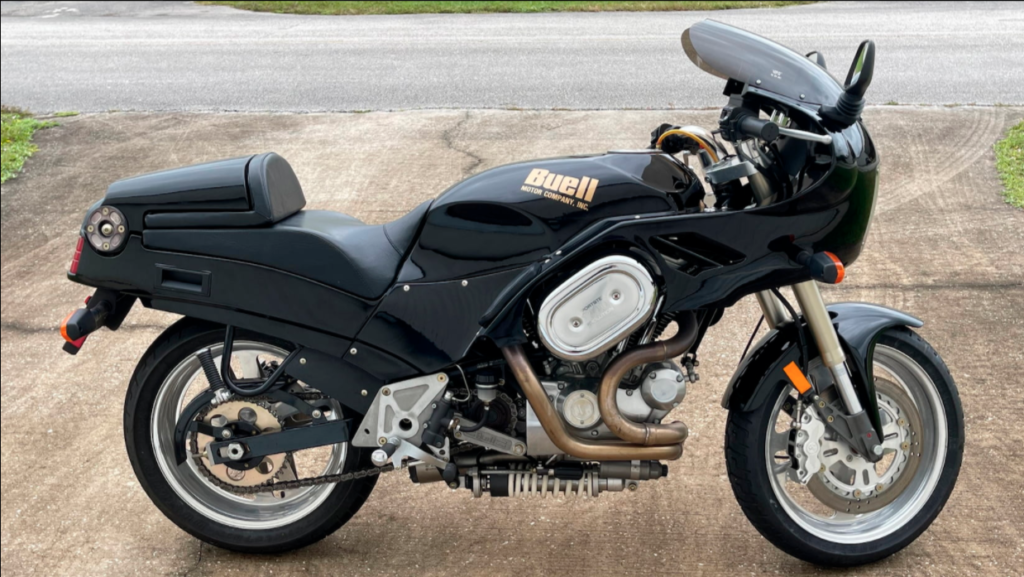
Erik To make a long story short, when H-D bought Buell the VR had not yet started racing. I went to Daytona and I said, I know you want build Buell’s image as a sportbike brand. I said, I know you want build Buells image as a sportbike brand. Why not let Buell be involved in the VR? You know that’s where my heart and soul is, and I said secondly, if it’s a Buell powered Harley-Davidson, then it’s my fault if we have problems and people will forgive me as we’re just a little start-up. I’m trying to be an American sportbike brand. It’s a great way of protecting the mothership. I’m not good at business or being a CEO but I understand motion and I understand technology so those are the two things I know well.
JL You know how to look at things from a different perspective and that was what I think brought a lot of interest for people my age who were interested in a Buell. Things like the underslung muffler, perimeter brake, fuel in frame, oil in swingarm designs, were those born out of packaging necessity or did you see them as performance enhancing?
Erik It is both of those. It was never because Erik is adamant that the fuel should be in the frame of a motorcycle, it was because if you’re building a high performance v-twin there’s nothing else you can do for placement. We’d already seen what a mess it was for Honda and Freddie’s GP bike to put fuell on the bottom of a bike! We wanted to build a bike that delivers what the customer wants – whether it’s a Superbike racer or whether they want an adventure touring bike. They were different customers with different needs so you need to engineer for that, and you should do it in the simplest way possible. That’s why I’m a believer in eliminating parts and making things simple. There are so many advantages to making things simpler from a design and manufacturing perspective.
JL When you started production were you disappointed in the numbers made or was it easier because you were looking forward to the next model and integrating changes?
Erik It’s actually kind of funny, I guess we were happy at about 300 bikes a year and the nobody expected the Buell S1 Lightning to be a hit except me. When our Italian distributor (who was also the distributor for Rolls Royce and Triumph in Italy) saw the S1 at the dealer show, he came over to me and says; “What is this one? This is such a stupid motorcycle, I will sell a million of them. It’s perfect, a big v-twin engine and a tiny seat.”
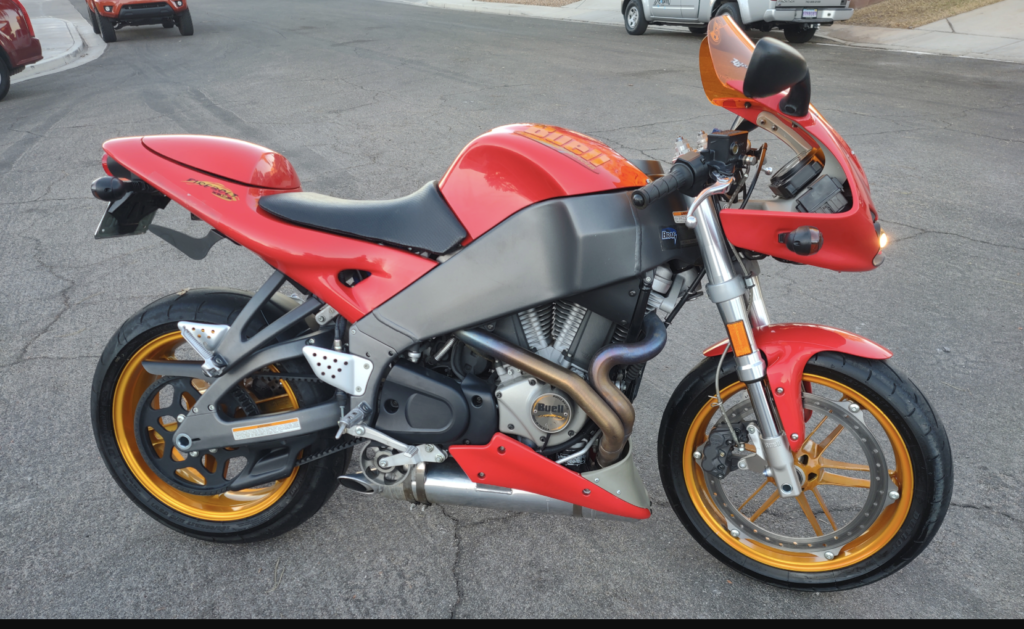
Erik I just had a feeling that somebody wanted a XR750 for the street which is kind of what it was. Big rear tire and a little bitty seat like the flat tracker.
JL I remember that I couldn’t stop looking at it and had to have one. It was short, aggressive and muscular. It was the perfect bike for those Sunday morning rides with the guys. Speaking of Buells of that era, my brother actually flat-tracked a Buell Blast at the Timonium, MD indoor races and at Gratz, PA.
Erik That was a cool little engine that was not supposed to end up like it did but that was an entry point for the brand and was supposed to be a whole series of bikes. None of that ever happened, through an indescribably horrible, stupid reason which was related to some executives at Harley, that ended up doubling the price we had to pay.
JL So Harley was actually making money on the engines but Buell was losing money on the Blast at that price?
Erik They bought a plant and geared up for production estimating 500,000 annually despite me raising my hand at meetings and asking, “what if it doesn’t go that high?” But they said they’d done surveys and you’re a fool that you don’t see the big picture like we do. The plant was equipped with wildly expensive machines not even running. They had this massive overhead and jumped the price from $1080 per engine to $2300. On a bike we were supposed to sell for $3900. That didn’t leave much margin to finish the rest of the bikes when you should be at 40% of the retail so that didn’t leave much room for marketing and stuff you needed to do. The same happened with the XB model. We were losing money as a result of this.
JL When new management at Harley came in and pulled the plug on Buell in 2009, were you relieved that it was over or was it heartbreaking?
Erik It was very, very sad to see what a mess they’d made of it. Between the unions and the fact that most Harley-Davidson dealers weren’t Buell dealers, it looked like we weren’t making a profit so they were trying to fix the entire company. It’s just such a tragedy because a lot of people lost their jobs and all those cutbacks that happened within the next ten years. I’m not a CEO type, I was just a guy starving making bikes. Vaughn Beals turned that company around in ten years, making it one of the most valuable brands in the world.
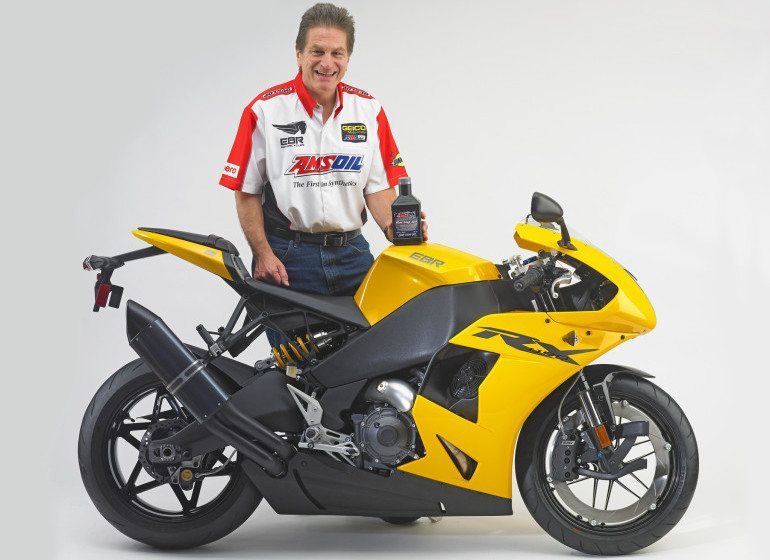
Erik In the short run it was successful, but it failed as a business. I got to build the bike I wanted within 90 days that summer and it was competitive as a Superbike. Heck, its been successful years later on the racetrack. It’s great to see guys like racer Geoff May can still win races at Barber, beating the KTMs and Ducati. It’s always been my dream to have a real American sportbike, not just a superbike racer. Racing’s good for the brand and credibility. Maybe I’m an optimist. I tried too hard and I wish I’d been a better business person. I should’ve been calmer and more measured, but I was ready to start when they said let’s go, I was ready to go (start EBR).
JL There are enough marketing and business majors in the world, but there are very few innovators, and that’s certainly been the hallmark of your personal brand. You’ve brought innovative products all along including EVs and Fuell and Fllow.
Erik I partnered up with with a French company on that. I was trying to find work for a couple of the engineers that were out of work and started a little consulting business. We did some design work and analysis for a French/American guy after they got a motorcycle design he wanted us to review, and basically we ended up telling him that they could not produce it and make money on it. I and the couple engineers on the side came up with several trick designs and was always interested in electric bikes ‘cause I’m a believer that someday we’re going to run out of dinosaurs, you know? Anyhow he and his friend Fred Vasseur started Fuell to produce those designs.
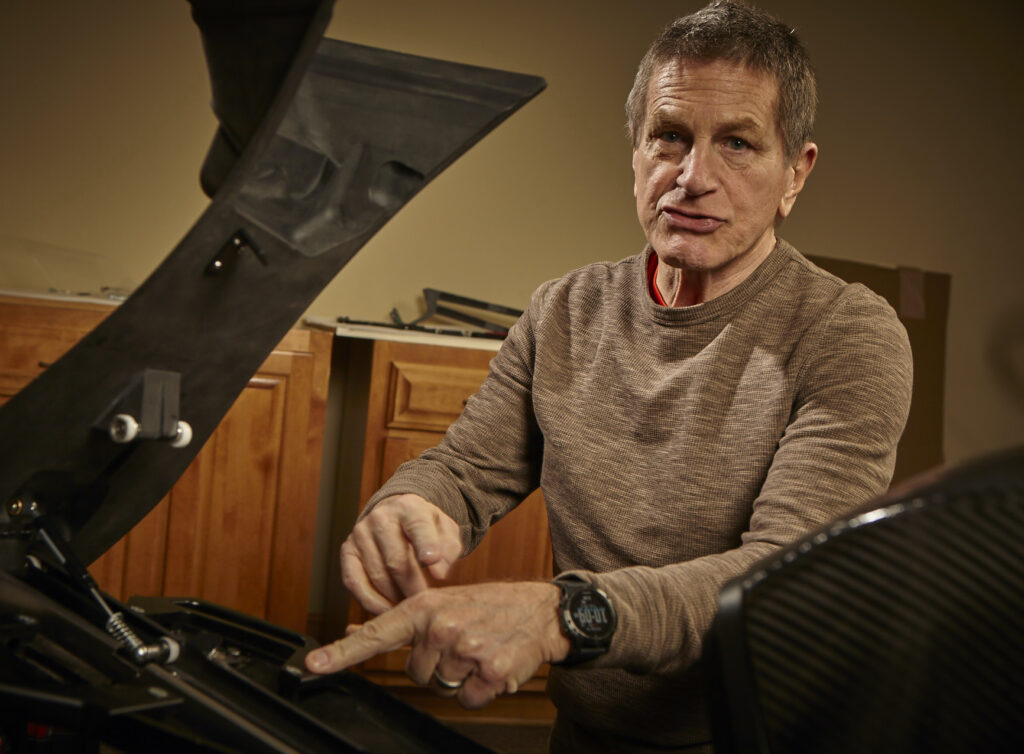
Erik You know, building $30,000-$35,000 Superbikes is for a very tiny market, but you only do it for one reason, and that’s passion. You will never make money doing it. I told them that we could design e-bikes but that’s not the same as electric motorcycles.
JL But you did end up creating E-bikes and E-motorcycles
Erik Yeah, but what happens with electric motorcycles is that you have as much drag as a car you know? Your front is low but your CD (coefficient of drag) is big and that’s the truth. The total drag is pretty high so when you’re rolling down the highway at 70mph you’re burning as much as a car. A Tesla goes 300 miles but needs a 100 kilowatt-hour battery and let me tell you, that weighs a lot, and you can’t do that with a motorcycle – yet – as efficiently. You can’t run sustained high speeds that long anyway if you’re in an urban or even suburban community. Electric bikes are crazy fast for the city. For getting away from stoplights and zipping around the traffic it’s awesome and you’re not going to have range anxiety in that setting. So the decision for those guys to start Fuell came at a conference in Paris where the keynote speaker flew around the world in an electric airplane. With the mayors of Paris, Barcelona and Berlin, and the bankers there was Formula E cars racing around a track, lots of caviar and champagne kind of event. The talk was of eliminating the internal combustion engine engines in the cities. I thought “holy shit guys”! This was it, this is what we need to get things going. You could replace all those gas-powered scooters because you know, even in Italy people have the Ducati 1199 for Sunday but they commute on a 500cc bikes with bags or a scooter. That’s what they ride every day and I thought that this could work. If you could do something that looks like a Ducati sport bike with storage so I went back and started designing it for them. I went back and designed a second generation a bit later before retiring. Not long after I saw they went under and it’s frustrating, it just breaks my heart for so many reasons. I hate this type of thing because people get hurt when these things happen.

JL It seems like the LiveWire had two things working against it, with both limited range and a high price.
Erik Yeah, customers did not embrace it, so unfortunately it’s one more electric motorcycle going down in flames. It’s too bad, cause many people thought customers wouldn’t like electric motorcycles but when they found out what the performance envelope was, they felt it wasn’t going to work for them if they can only ride it for a bit on Sunday. Now those two big trips I want to make a year are out of the question. You’ve got to make something that delivers fundamentally with the customer. If you want to build a commuter, it’s got to be economical, you know?
JL You’ve led an amazing life so far, but I feel there’s still more to come yet.
Erik It’s very satisfying to make a connection with people of all types.
JL Indeed, connecting through music and motorcycles, what could be better?
With that, I hung up the phone and sat back in my chair to absorb the moment. Erik Buell has managed to achieve the great American dream by sheer force of will and determination. Despite the ups and downs, he’s still a wildly optimistic guy with an abundance of energy and talent. In the rough and tumble world of motorcycle design and manufacturing, few others have achieved this success.
Erik Buell will be the Honored Guest at the upcoming 28th Radnor Hunt Concours on Sunday, September 7 in Malvern, Pennsylvania. More information is available at www.radnorconcours.org
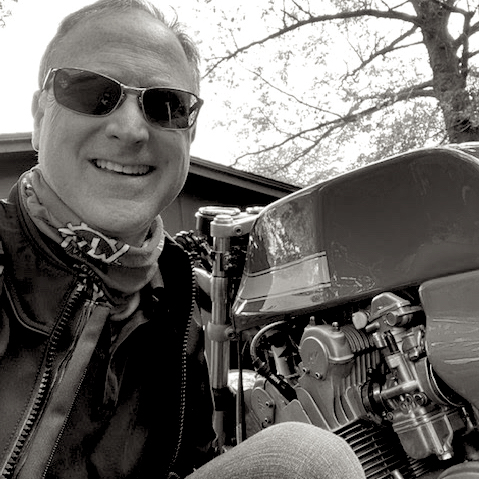


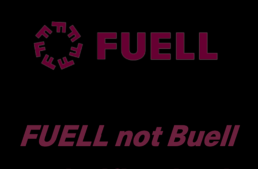
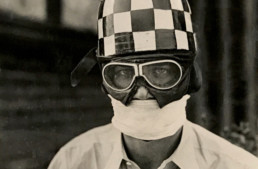
Sigh … Eric Buell .. an absolute F***ing genius when it comes to mechanics and engineering … an absolute failure at business and damn near everything else
His music ?
Err … lets just say .. his latest is anything but rock . What it is is a poor imitation of contemporary Nashville’s current BS attempt at rock . e.g. In the words of a recent book I read ;
” Stupid music .. created by smart people .. to make money off of stupid people . ”
… Or as Keith Richards put it … ” A spineless attempt at rock with zero balls .”
Not exactly something to be trying to emulate . Not to mention all his ‘ albums ‘ at best sound like a second rate bar band recording in a decent studio with a producer desperately trying to make something of them
So once again .. lets give ole Eric yet another F … sadly …. and hope to who ever he FINALLY comes to his senses and focuses on what he can do … engineer ! ….FOR SOMEONE ELSE !!!!!
Cause yeah … everybody thinks he/she is a rock star.. or worse an entrepreneur .. problem is .. very few of us actually are .. 😉
In closing .. to paraphrase Britten & Lyle ( ” We Don’t Need Another Hero ” )
” We don’t need another rock band .. we don’t need another motorcycle brand … .. what we need is a good engineer .. to get us outta this M/C blackhole we’re in ”
As fer y’all Mr Lawless .. stick ta what ya does best .. yer verse and poetry .. leaving the job of music critic to those of us who know WTF we’re talking about ! While NOT fawning over our heros . .. cause really .. we don’t need another hero .. anywhere !
😎
“Between the unions and….”
What about the unions?I wish he had gone into a little more detail about this.How many unions are there at Harley Davidson anyway?10? 20? Sounds like theres a lot of them.
A lot of people give partial blame to the unions for what happened to Triumph/BSA, and who it was said would be itching for any excuse to go out on strike.
Chris .. if you want to hear the facts from a M/C business insider … watch / listen to todays episode #71 ( watch on YouTube .. listen wherever you listen to podcasts .. but in light of the graphs etc .. I’d advise watching it ) of
TheLowDown Show on ADVRIDER .. again … Episode 71
Simple fact is .. much as it pains me to say this ( Cause like Mr Uhlarik I like Eric ( .. a lot ) ERIC killed Buell .. not H- D . not the unions … not anybody else … ERIC killed Buell .. because as Mr Uhlarik states in the podcast ;
” The Research part of R&D is easy .. its the development thats hard .. takes time and a helluva lotta effort ”
And Development … is one of the many things ERIC does not do .. at all … ask anyone who’s made the mistake of buying one of his bikes … the folks I knew that’d tell you for every week their Buell spent on the road .. it spent three in the shop .
Not to mention ERIC’s ZERO business acumen
But lest we seem to be picking on ole Eric .. lets be blunt … H-D has had the same damn problem for the last 30 odd years .. which is why the likes of the Street .. LiveWire .. etc were such abject failures ..
Cause like Buell … H-D’s problems are H-D’s fault .. NOT anybody else’s
And yeah .. I hope somehow H-d can pull their heads out .. as well as ERIC find a niche he can survive in … but .. I kind of have my doubts .
FYI ; If you don’t already know … H-D’s profits across the board are now down some 46% .. and not only are they selling off properties ( read factories ) .. but they’re selling off a percentage of the only division still barely making any money
Harley Davidson Financial Services … talk about shooting yerself in the foot with a 12 gauge loaded with buckshot !
And ahh … ya can tell all those Tighty Whitey never Righty bearded online opinionators where to shove it as well .. cause as is all of their ilk … they’re full of it up to their tattooed pierced little ears
Cheers mate … and again … two thumbs up !
Oops … realized despite all that info I passed on I didn’t address your main question about Unions ( or Onions as we call them in my household .
First lets be clear .. due to career mandates I had to be a member of two Unions .. the AFM .. and err .. oh well .. what the hell SAG . And to be clear though I don not like unions I find them to be an evil necessity .. evil cause they are a pain in the posterior for everyone including their members … but necessary because without them the corporate abuse on employees albeit bad enough with them … would be ten times as bad without them
So … yer question .. how many unions does H-D contend with ;
The the only internal one is a division of the UAW which all on the floor workers [ supervisors mgrs etc not included ] belong to . That is the only one internally H-D or any other M/C manufacture deals with directly .
Ahhhh … grasshopper .. but then there’s all those other external unions the company has to deal with for services ( HVAC , Plumbing , Pipe fitters , electrical etc ) as we’ll as those involved in construction ( Steel , bricklayers , cement and concrete etc )
So the short simple answer is one .. which was the same for ole ERIC … but the long answer ? Depending on the state you’re in ( NY and CA are two of the worst * ) .. a multitude of external unions on the side when this that or the other thing is needed .
[ * in NYC I cannot carry MY amplifier into a union club or venue .. I cannot plug anything in .. and I cannot move anything on the stage/set … all I can bring in is ONE musical instrument .. all the rest need to be carried by union porters or moved by stage crew or plugged in by union electricians .. etc etc – et al – ad nauseam … and though its been while since I’ve worked in CA ( thank goodness ) it used to be the same back in the day ]
But … and here’s the kicker .. that kicks ole ERIC square in the pants … EVERYBODY in manufacturing unless they’ve banned the internal unions ( which Eric could of done in the Buell factory ) has to deal with the same issues .
Which then begs the question .. why the H-E double hockey sticks is ERIC whining and blaming about an issue that is common place and normal ?
Which is why in my mind … though I hold ERIC’s engineering and mechanical skills ( in relation to Research and prototypes ) in such high esteem … while looking down on him both as a business man .. and pretty much a human being .
Cause in my opinion .. overall .. ERIC .. is a self created victim .. who gets in his own way more than anyone else desiring to could ever hope for .
Hope ye read these .. and hope that helps
😎
Cool article.
Cool subject.
Would love to know more about the “Sugar” middleweight triple (?) project and the Hastur 620cc twin.
Those would also make good chapters of a good book….